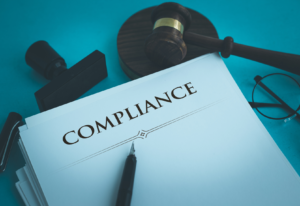Transition to eVisas in the UK: Updates for Employers

The UK is transitioning to a digital immigration system, replacing physical documents like Biometric Residence Permits (BRPs), Biometric Residence Cards (BRCs), and other legacy paper documents with eVisas. An eVisa is an online record of an individual’s immigration status, including the conditions under which they are permitted to enter or remain in the UK.
When is the transition to eVisas going to happen?
This digital shift is set to happen by January 1, 2025: all physical immigration documents will be phased out in favour of digital records, simplifying the process for individuals to prove their status online.
Who has access to eVisas?
Individuals who currently hold a biometric immigration document, such as a BRP, BRC, or Frontier Worker permit, can already access an eVisa. They can do this by creating a UK Visas and Immigration (UKVI) account and verifying their identity using the
“UK Immigration ID Check” app. Those with other types of physical immigration documents don’t have access to eVisa yet.
Employers can help employees who may need assistance setting up their UKVI accounts or managing their digital status. This can be done if an employer has the legal authority to do so, such as power of attorney.
What Is Going to Change for Employers with Sponsor Licences?
The changes will primarily affect migrants currently residing and working in the UK. Beginning in autumn 2024, nearly all new UK visa applicants will be issued an electronic visa (eVisa). British and Irish citizens will not be affected by this change and can continue to demonstrate their rights using their British or Irish passports, as they do now.
For both new hires and prospective employees, employers should continue to use the online right to work service to verify status through a generated share code. This share code can then be used to check the individual’s right to work. While many people will be moving to eVisas, some physical documents will still be acceptable for proving the right to work – more detailed information can be found here.
For current workers, employers retain a statutory excuse against civil penalties if initial right-to-work checks were conducted according to the relevant guidelines. A follow-up check is only necessary if an employee’s current permission to stay is nearing expiration, as indicated by the initial check.
While most BRPs and BRCs will expire on December 31, 2024, this expiry date is for the document itself and does not affect the holder’s immigration status. Therefore, there is no requirement to recheck an employee’s status solely because their BRP or BRC expires on December 31, 2024.
When Are Repeat Right to Work Checks Needed?
There are two main scenarios where employers need to conduct repeat right-to-work checks:
1. Manual Right to Work Checks Performed Before April 6, 2022
If an employer conducted a manual check using a physical document before this date, they must perform an online right-to-work check before the document’s expiry date to maintain a statutory excuse. As we’ve mentioned above, most BRPs and BRCs expire at the end of 2024, but this date is not linked to the individual’s actual immigration permission. Employers are advised to conduct these checks early to avoid a bottleneck at the end of the year.
2. Compliant Online Right to Work Checks After April 6, 2022
For checks performed online after this date, if an employee’s immigration permission extends beyond December 31, 2024, no repeat check is necessary. Employers will maintain a statutory excuse as long as the initial checks complied with the guidance applicable at the time.
!NB: For individuals with pre-settled status, employers do not need to conduct additional right to work checks. According to the Home Office’s Employer’s guide on right to work checks, only an initial check needs to be done before the employee starts their job.
Steps for Employers to Stay Compliant with eVisa Updates
- Update Internal Policies and Procedures
Revise internal procedures to align with the new eVisa requirements. Ensure HR staff are trained to conduct online right-to-work checks using the UKVI system.
- Plan for Repeat Checks
Identify employees who need repeat checks based on their use of physical documents. Begin this process early to avoid compliance issues.
- Communicate with Employees
Clearly inform employees about the transition to eVisas, including how to access and manage their digital status.
- Support and Training
Provide support to employees who may find the digital transition challenging. This could include step-by-step guides, workshops, or one-on-one assistance to help them create their UKVI accounts and link their eVisas.
- Monitor Compliance and Update Records
Regularly audit employee records to ensure all employees have transitioned to the eVisa system and that all information is up to date. Verify that employees have set up their UKVI accounts and linked their eVisas correctly.




